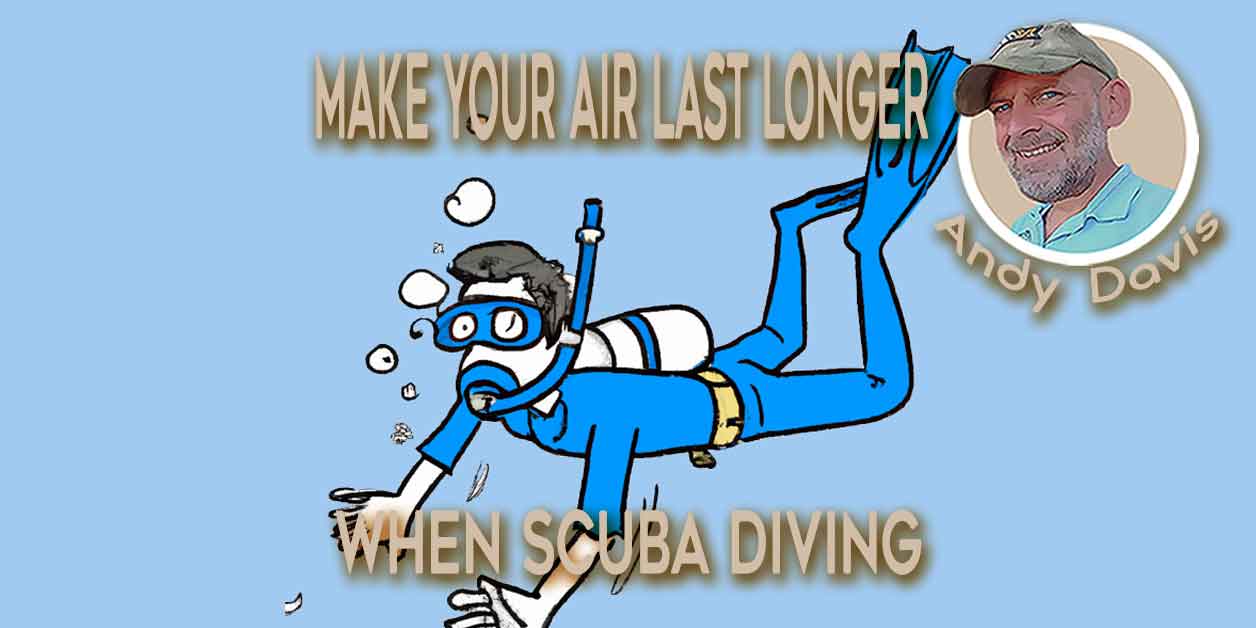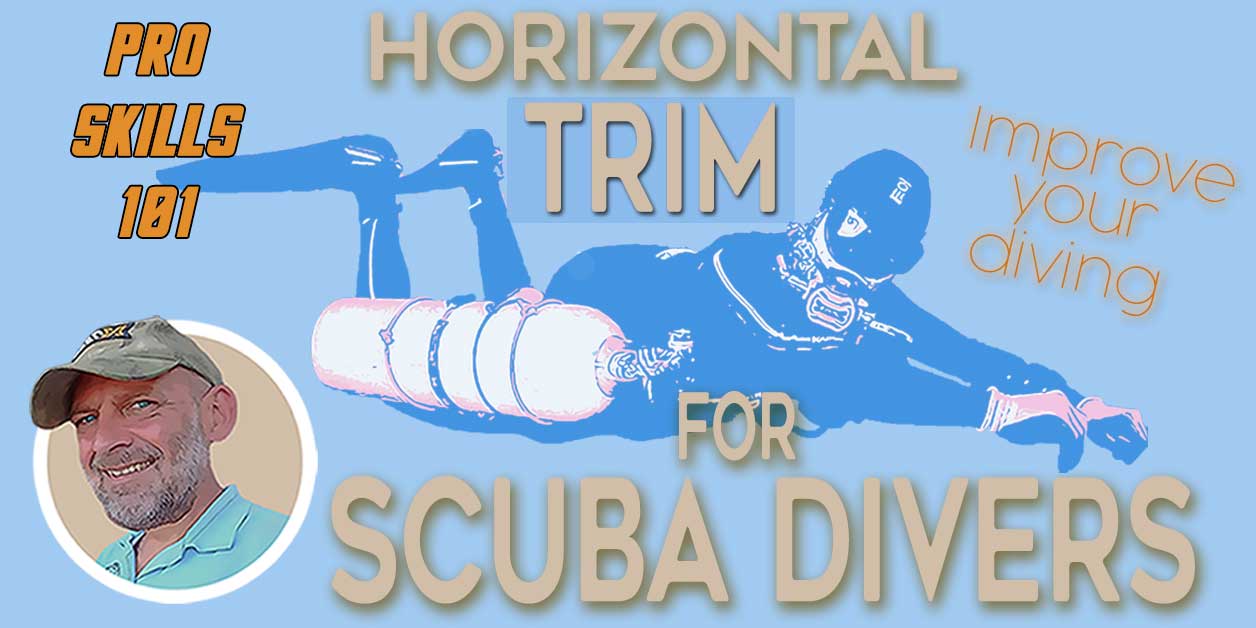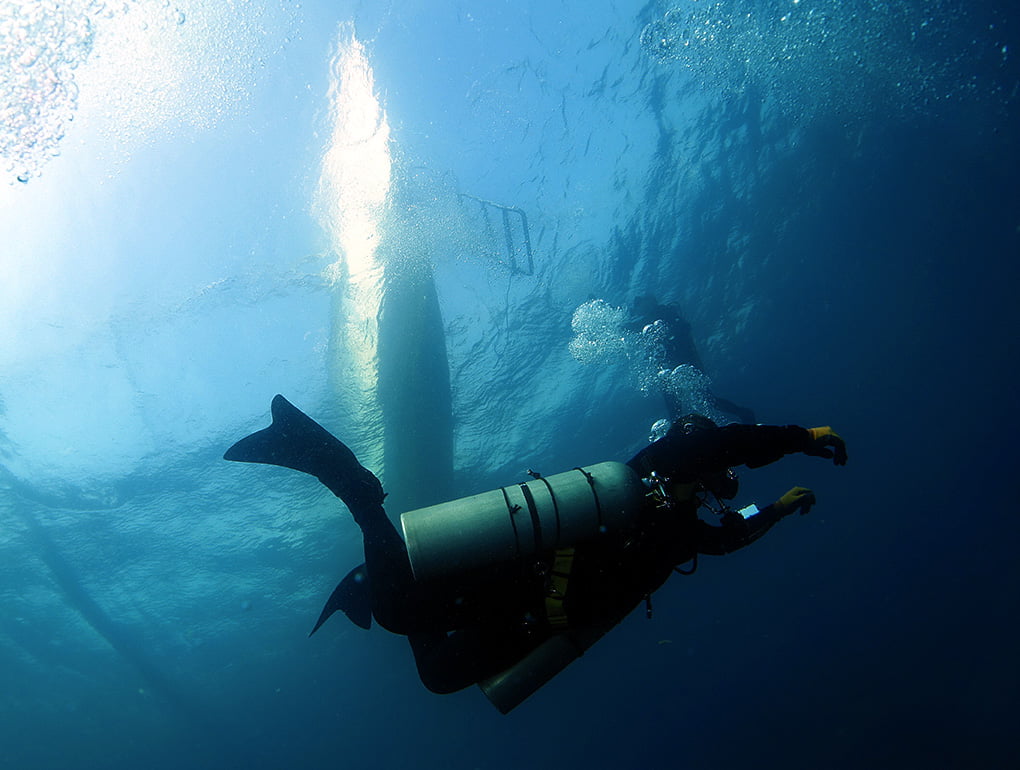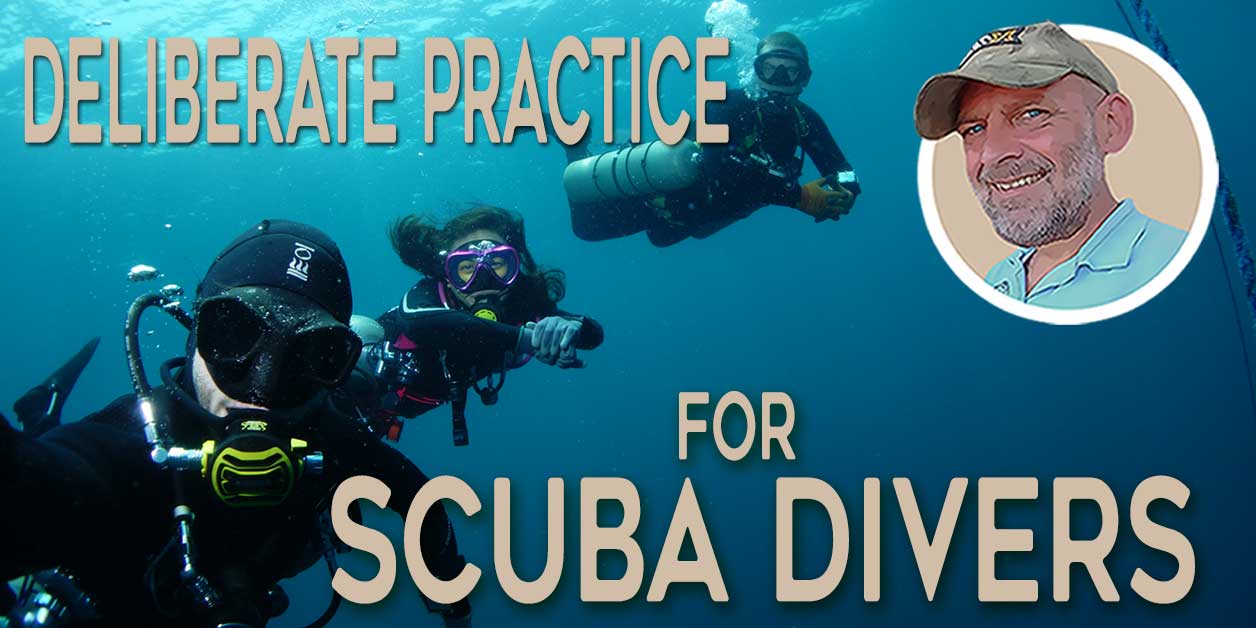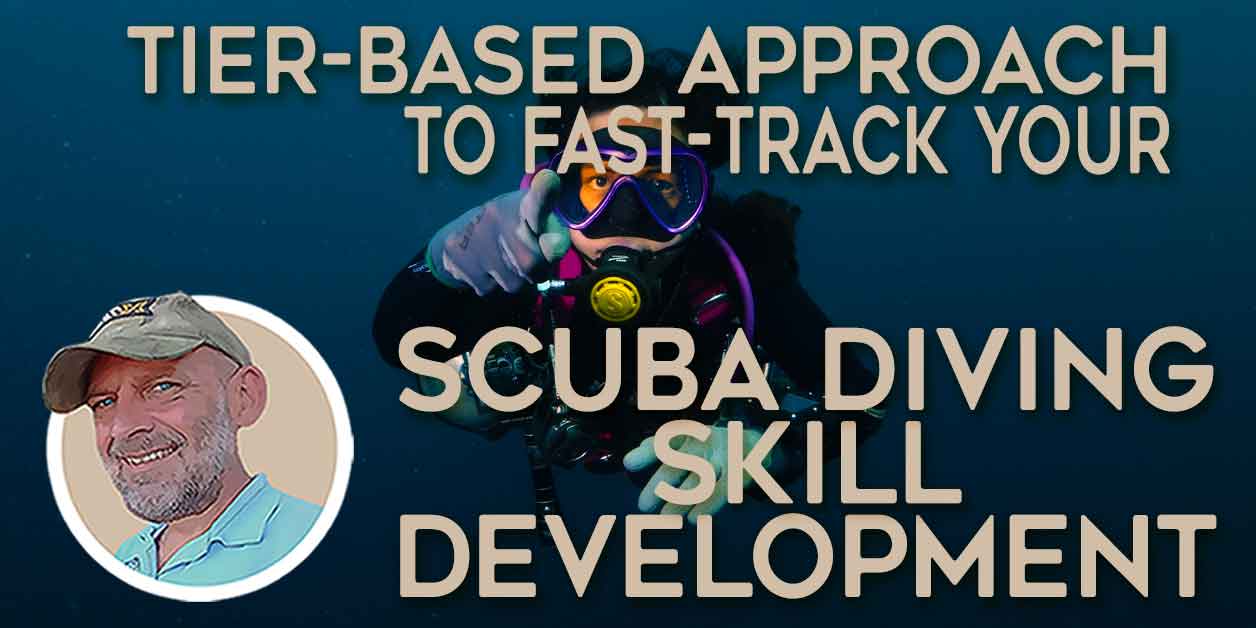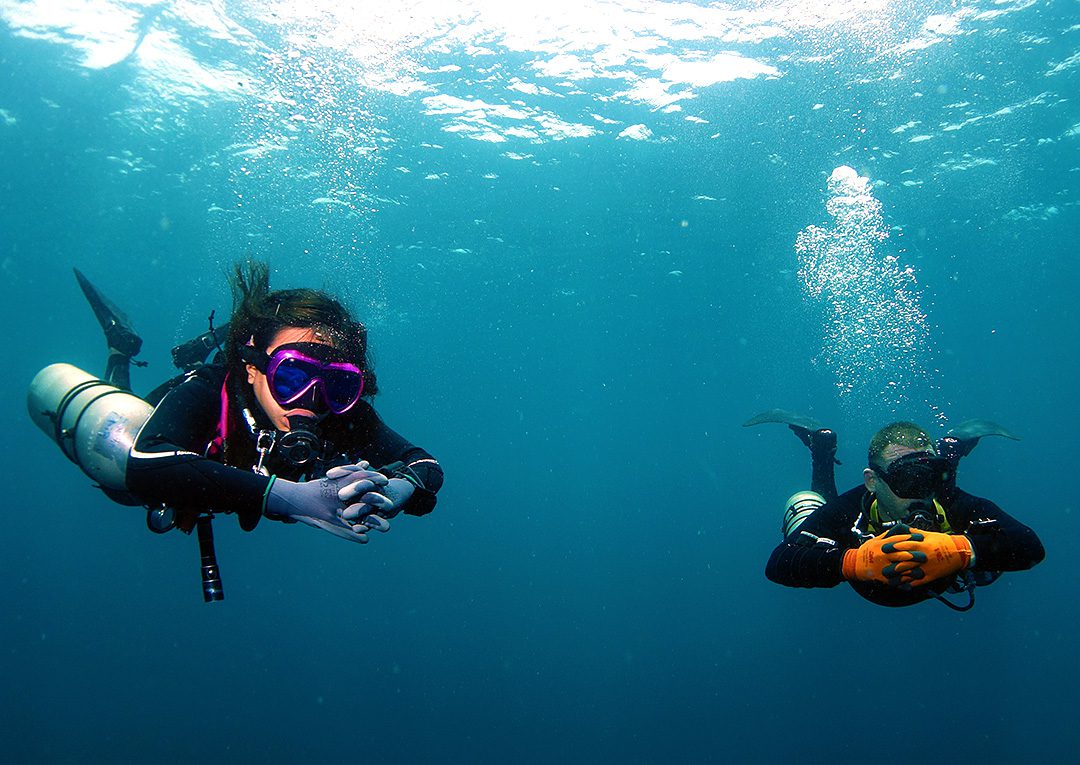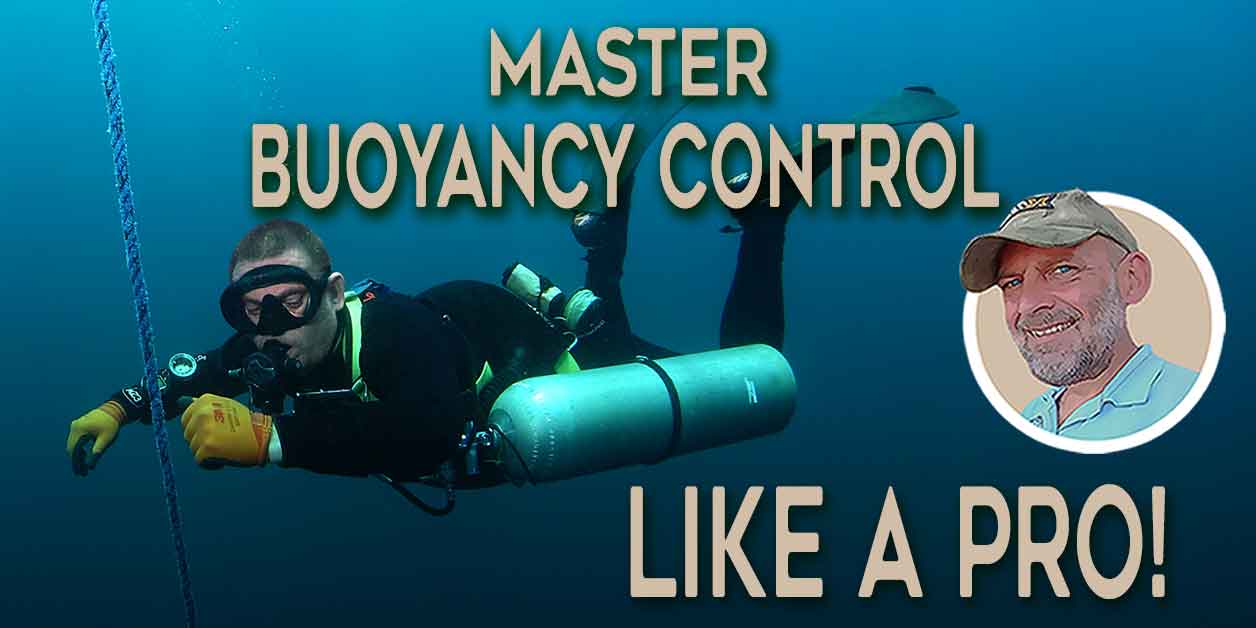10 Tips To Horizontal Hover When Scuba Diving
The ability to hover statically in horizontal trim when scuba diving dramatically increases your comfort and capability underwater. Unfortunately, this proficiency is frequently neglected in training courses; it takes time to master and too few scuba instructors are capable of doing it themselves.
Horizontal trim is not innate if the diver is finning; using a flutter kick will mask poor trim because it allows the lower body to be held up. True horizontal trim can only be ascertained if the diver is static and hovering.
In this article, I list ten simple considerations that will enable you to master static horizontal trim hover when diving.
Horizontal Trim Hover: Weighting
Fine-tune & confirm your ideal weighting requirements. Any surplus weight will mean there is air in your BCD. As you attempt to hold trim, this air can migrate in the BCD and cause havoc with your trim.
Jacket BCDs tend to exacerbate this, compared with BP&W designs, but the root problem is always the volume of air in the BCD. Be aware of how much air is actually in your BCD and where that air is resting. If you go ‘head-down’ then the air will migrate to the bottom (highest point) of your BCD. You’ll need to move it if you are to regain horizontal trim. The less air, the less dramatic this issue is.
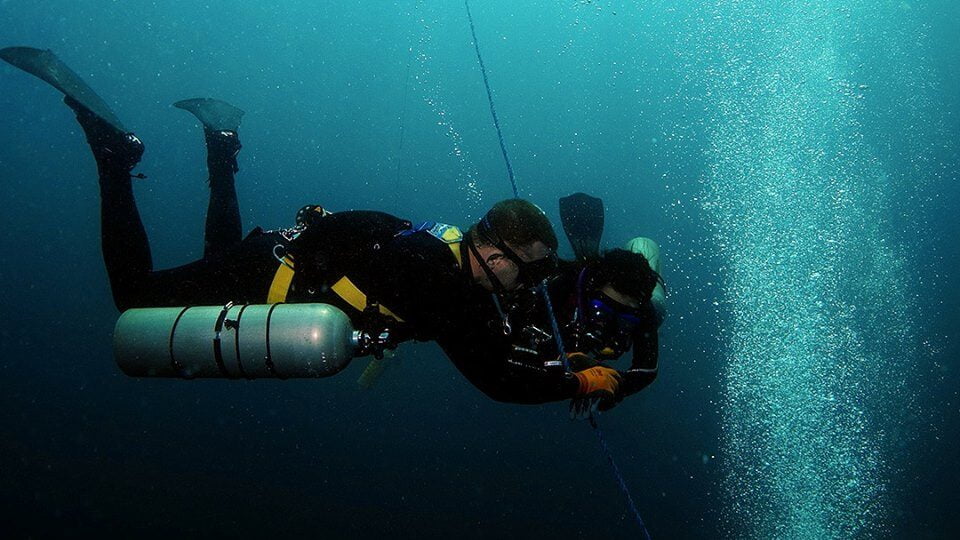
Cylinder Positioning
Cylinder positioning makes a big difference. Experiment with fitting the cylinder higher/lower within the cam band. Be aware that this positioning will need to be changed if different cylinders are used.
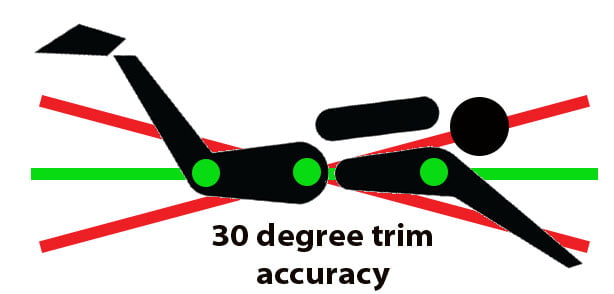
Fit a Secondary Cam-Band
Fit a second (lower) cam band to the BCD, if you can. This gives you more control over cylinder positioning, in addition to helping control the effect of tail-buoyant aluminum cylinders. Many good quality BCDs have the option to fit a second band but don’t come with one as standard.
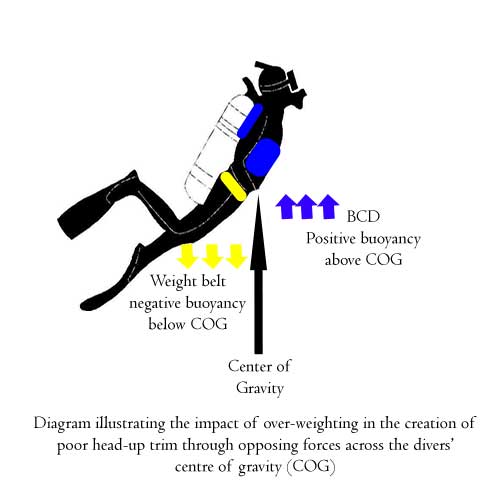
BCD Trim Weights
Trim weights are useful for fine-tuning horizontal trim, but they are not the first and only solution. A flawed posture and other equipment weight imbalances will mask fundamental problems; you cannot hope to effectively fine-tune your innate horizontal trim until those issues are resolved.
Trim weight pockets on the upper BCD help bring your head down. If you are too much head down, then you may have too much trim weighting. If your torso is too upright, then trim weights can help bring you more horizontal.
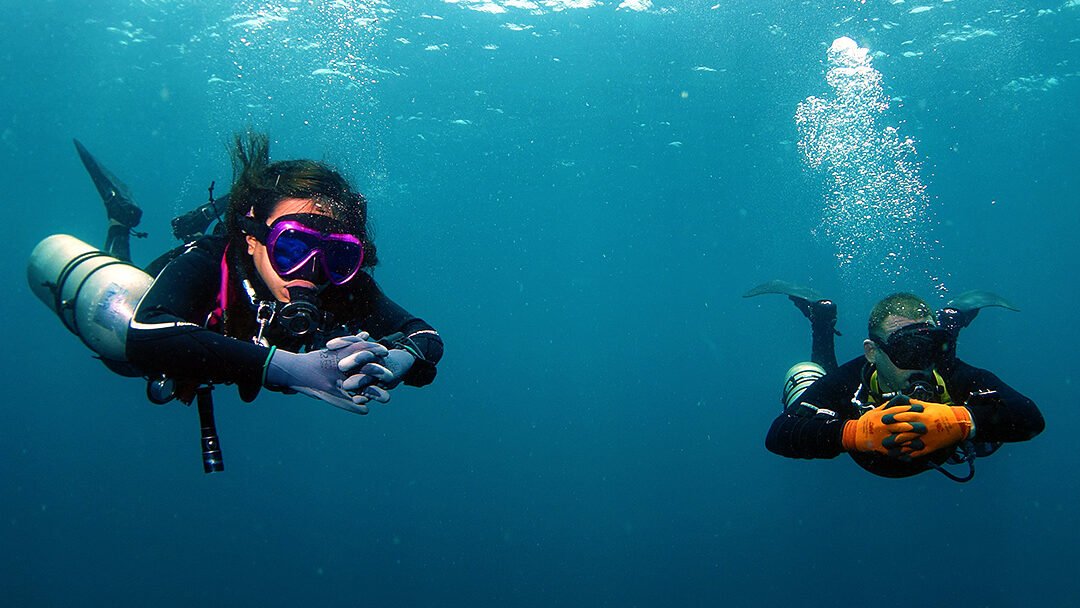
Cam-Band Trim Weights
If your BCD does not have inbuilt trim weight pockets, you can add separate trim weight pockets to your BCD camband. These allow you to fine-tune your trim by adding weight above or below your ‘balance point’, without the excessive re-distribution caused by using ankle weights.
Integrated Weights can cause Trim Problems
Be aware of the problems caused by using integrated weight systems. On jacket BCDs, these tend to hold the weights further from your torso and there can be a lot of inertial movement/swing in the weights. Weight belts offer more snug storage, directly against your torso without ‘swing’.
Even better, consider investing in a backplate/wing-style BCD. The metal backplate distributes weight across the length of your upper torso and contributes towards innate horizontal trim. These BCDs are modular, so you can pick an aluminum or steel backplate to suit your weighting needs. In many cases, no additional weighting will be necessary.
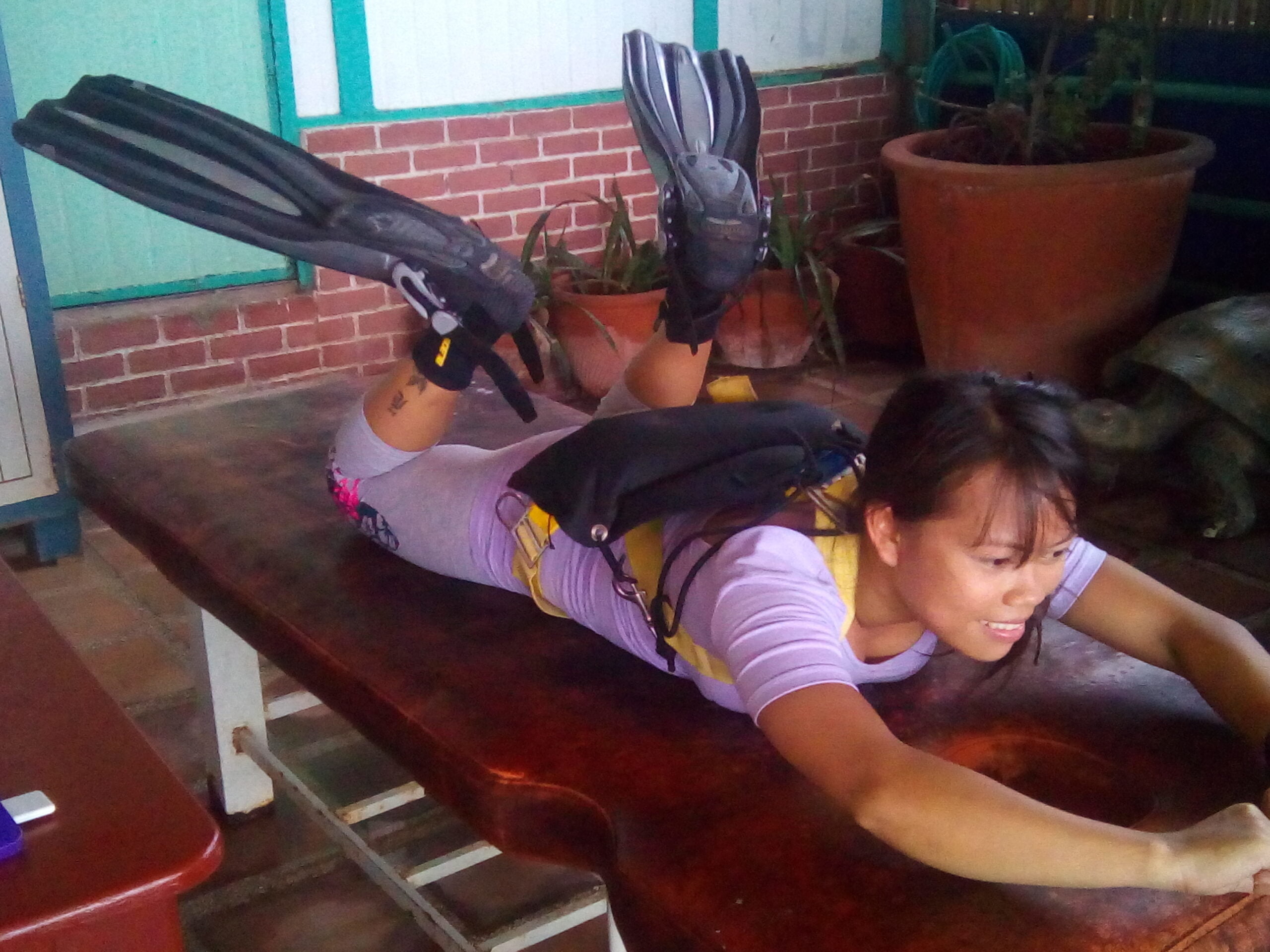
Posture for a Horizontal Trim Hover
Practice optimal posture for effective horizontal trim when hovering. The shoulders, hips, and knees should all be on the same level – requiring a back-arch (akin to ‘freefall parachutists’ posture).
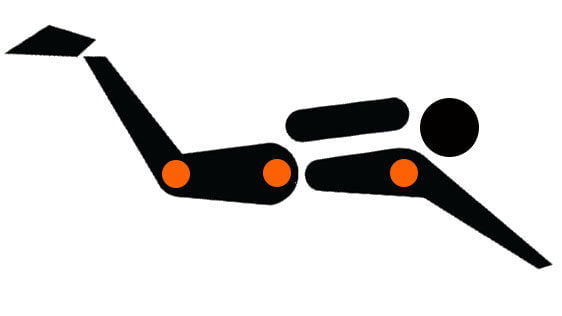
Typically, weakness in the stomach/hips tends to unravel this posture – leading to an ‘arse-up/knees down body position that makes hovering much more problematic. It can take a while (multiple dives) for this position to start to feel natural – and to develop the muscles needed to hold it in a relaxed manner.
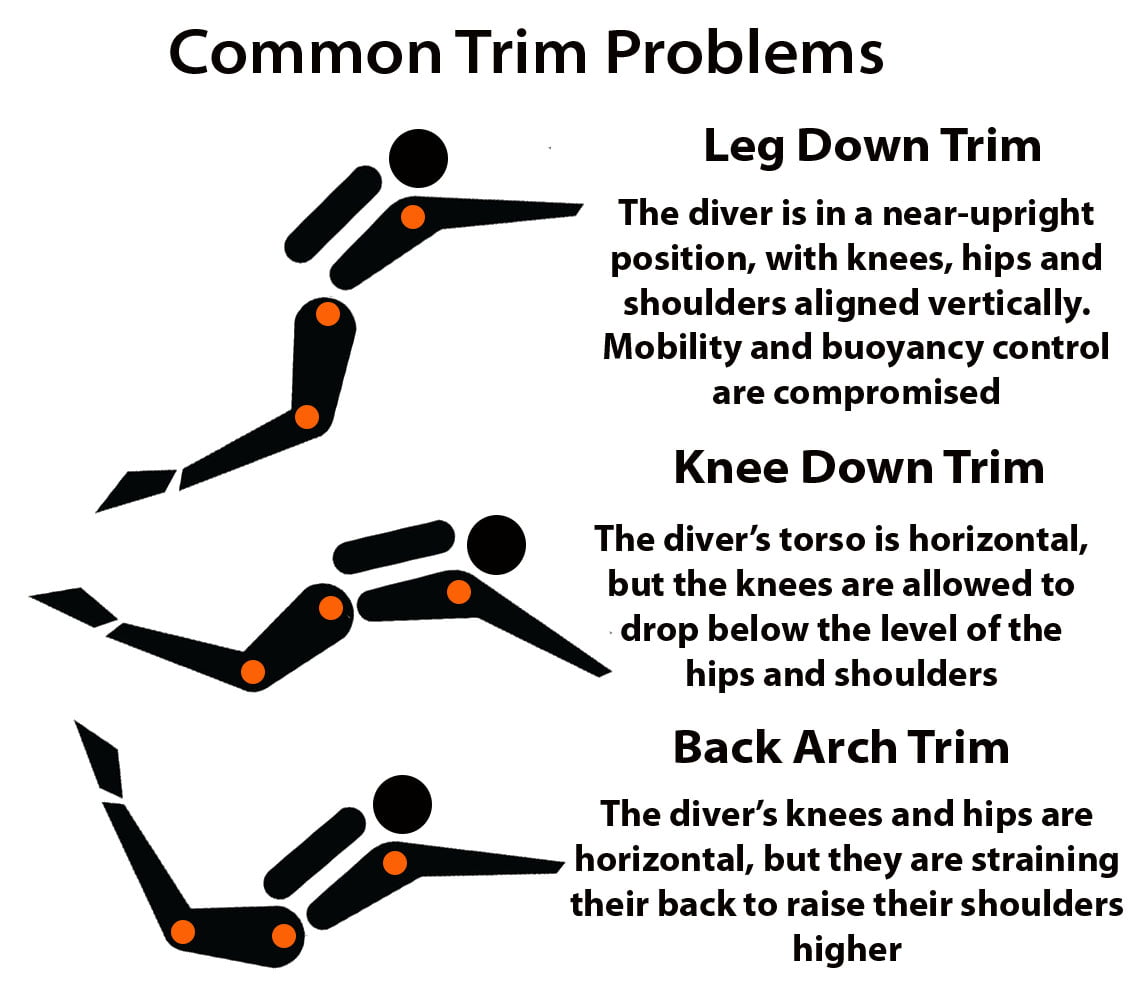
Head and Arm Positioning To Hover in Trim
Consider your head and arm position when hovering horizontally. The body trim tends to follow the head, with respect to orientation. When horizontal you need to look forwards (bent neck), otherwise, if you are looking down, then your body will go head-down. Likewise, extending your arms forwards, or pulling them back, will impact your overall trim.
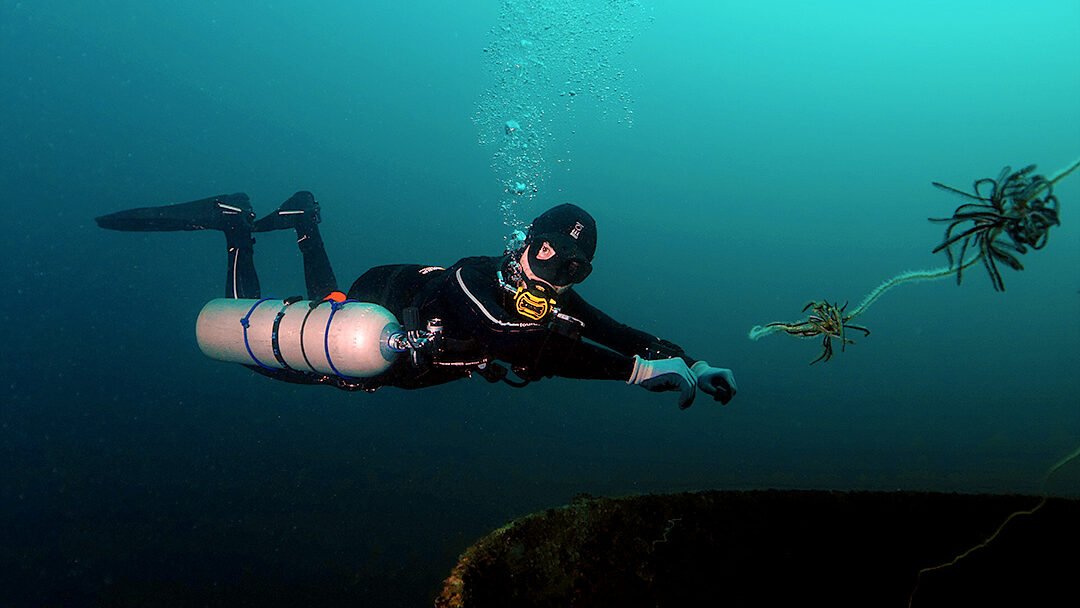
Leg Positioning To Hover in Trim
If your shoulder-hip-knee positioning is stable and level, then the position of your lower legs/fins allows you to fine-tune your balance. However, there’s no point getting focused on this aspect until your basic positioning is perfected. In horizontal trim, a good leg position is also critical.
Keeping the knees bent and holding the lower legs vertically does a lot to alter your balance point – this works great with advanced finning techniques such as the frog kick or the modified flutter kick. It also allows techniques such as the ‘helicopter turn’ and ‘back/reverse kick’ to be utilized.
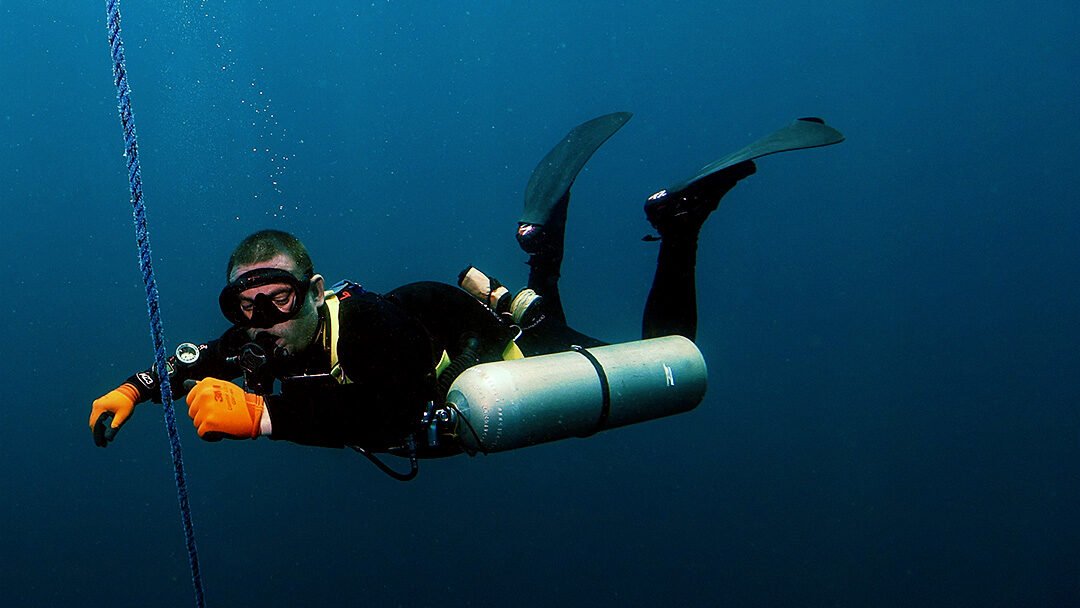
How Horizontal Trim Hover Actually Feels
Be aware that proper horizontal trim can actually feel like you are a little bit ‘head-down’. Most divers get very accustomed to being in a head upwards trim. This can deceptively feel like you are horizontal.
You can confirm that you are in horizontal trim by tucking your chin to your chest and looking along the front of your torso. Your eyeliner should be straight behind you. If you are looking towards the bottom, your trim is feet low. If you are looking towards the surface, you are actually head-low trim.
About The Author

Andy Davis is a RAID, PADI TecRec, ANDI, BSAC, and SSI-qualified independent technical diving instructor who specializes in teaching sidemount, trimix, and advanced wreck diving courses.
Currently residing in Subic Bay, Philippines; he has amassed more than 10,000 open-circuit and CCR dives over three decades of challenging diving across the globe.
Andy has published numerous diving magazine articles and designed advanced certification courses for several dive training agencies, He regularly tests and reviews new dive gear for scuba equipment manufacturers. Andy is currently writing a series of advanced diving books and creating a range of tech diving clothing and accessories.
Prior to becoming a professional technical diving educator in 2006, Andy was a commissioned officer in the Royal Air Force and has served in Iraq, Afghanistan, Belize, and Cyprus.
In 2023, Andy was named in the “Who’s Who of Sidemount” list by GUE InDepth Magazine.
Purchase my exclusive diving ebooks!
Originally posted 2017-12-22 21:11:04.







